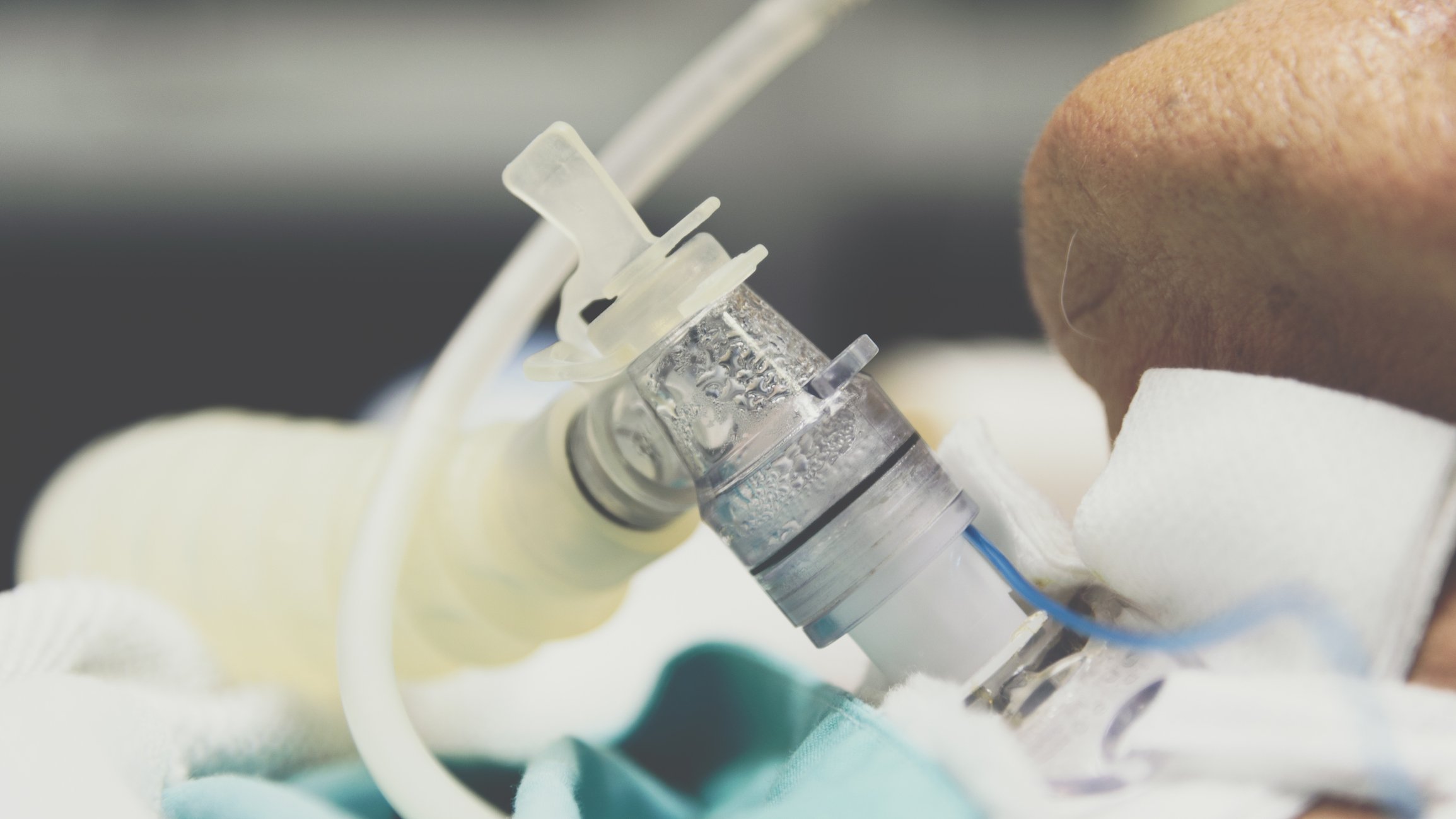
Tracheostomies are increasingly common, particularly in long-term skilled nursing facilities and intensive care units, which means all medical providers must master tracheostomy secretion management. Tracheostomy reduces cough strength, lowers subglottic pressure, and weakens sensations in the pharynx and larynx.
This causes secretions to accumulate in the airway, and the volume and thickness of the secretions vary significantly from patient to patient. Medical professionals, first responders, and patients with tracheostomies must learn how to manage secretions to improve patient comfort and reduce the risk of infection, aspiration, and other complications.
Tracheostomy Secretions 101: Understanding the Problem
Secretions are a natural reaction to tracheostomy, not a sign of a problem. A trach tube bypasses the upper airway, which normally cleans and moistens the air. This causes the body to produce more secretions. When tracheostomy cuffs are kept inflated for a prolonged period, these secretions can pool in the airway. This increases the risk of health issues that include:
- Aspiration
- Breathing difficulties
- Breathing in contaminated secretions
- Pneumonia
- Infection
Many patients with tracheostomies already have other health issues, such as chronic obstructive pulmonary disease (COPD), a history of severe airway infections, prior airway trauma, or difficulty withdrawing from a mechanical ventilator. This makes them especially vulnerable to infections related to poorly managed secretions.
When to Suction Tracheostomy Patients
Suctioning can greatly reduce the risk of tracheostomy-related complications. However, it does present some risks, which makes it important to avoid over suctioning patients. Most healthcare providers recommend suctioning the tracheostomy twice daily, though newer research recommends suctioning at least every eight hours.
To reduce the risk of suctioning complications, a patient having trouble managing tracheostomy secretions should first try to clear their own airway by:
- Bending forward and coughing.
- Squirting sterile saline fluid into their trach tube and then attempting to cough again.
- Taking a hot bath or shower.
- Placing warm gauze over the trach tube.
If the patient cannot breathe, shows signs of aspiration, or cannot follow instructions, do not waste time trying to get them to clear their own airway. Proceed with suctioning.
Strategies for Suctioning Tracheostomy Secretions
Before suctioning a tracheostomy, thoroughly wash your hands and wear gloves to reduce the risk of transmitting pathogens to the patient. Change gloves and rewash hands after touching the patient or their secretions and before touching the suctioning machine or another patient. These tracheostomy suctioning guidelines can help reduce the risks to the patient:
- Suction only when the patient shows indications for suctioning.
- Use the lowest effective suctioning pressure.
- Suction for no longer than 15 seconds, using continuous instead of intermittent suctioning.
- Hyperoxygenate the patient before and after suctioning.
- Avoid the use of saline lavages.
- Use a suction catheter that is less than half of the diameter of the endotracheal tube.
- Use only new or fully sterilized equipment, diligently following the manufacturer's instructions.
After preparing the patient for suctioning, sterilizing the equipment, and applying gloves, these techniques ensure effective tracheostomy secretion management:
- Insert the catheter into the tracheostomy opening before applying suctioning.
- Remove and rotate the catheter slowly and evenly, continuing to apply suction.
- Clean the catheter between passes by inserting it into distilled water and pulling small quantities of water into the catheter.
- Allow the patient to rest for 30 seconds between suctioning passes.
- Monitor the patient’s vital signs before and after suctioning. Look for signs of distress during suctioning, and terminate the procedure at the first sign of distress.
Immediately dispose of disposable equipment, and sterilize reusable equipment. Do not store dirty equipment to wash later.
The right equipment is critical to ensuring that tracheostomy patients receive prompt, effective care. Transporting patients can be difficult, and may not be necessary.
Portable emergency suction reduces treatment delays and allows your agency to treat patients wherever they are. However, it’s important not to forgo effective treatment for convenient treatment. The right emergency suction devices deliver both. To help select the appropriate machine for your agency, download our free guide, The Ultimate Guide to Purchasing a Portable Emergency Suction Device.
Editor's Note: This blog was originally published in August 2024. It has been re-published with additional up-to-date content.















